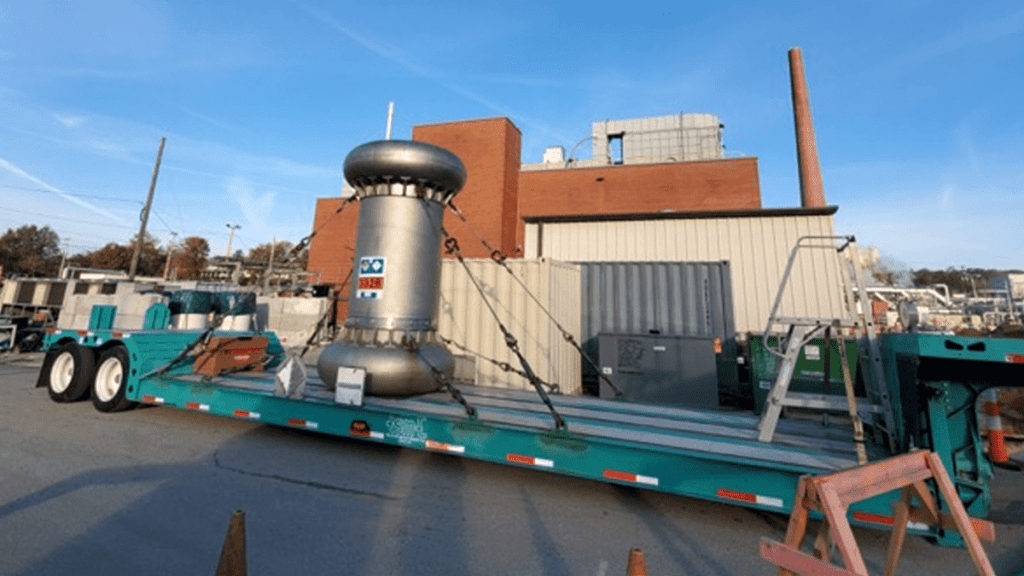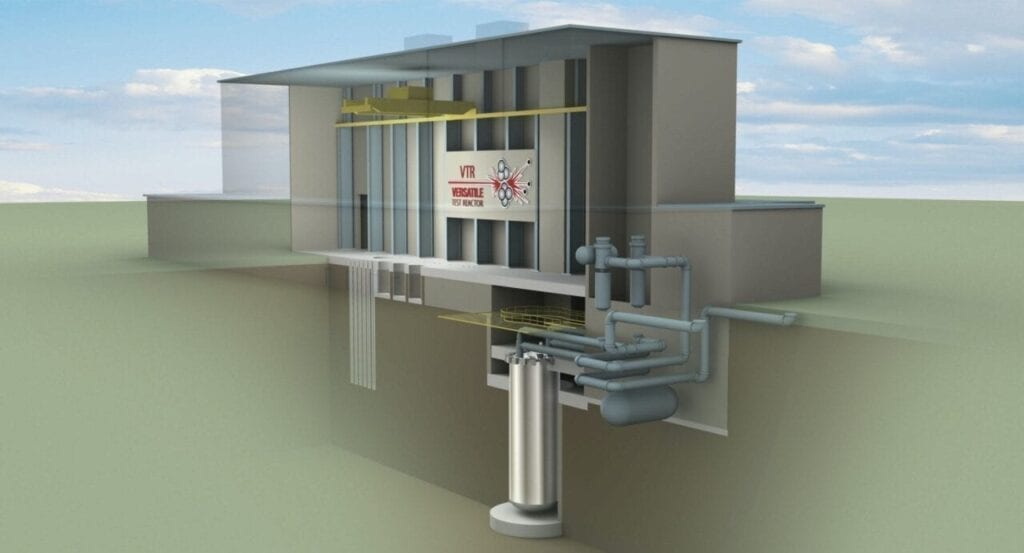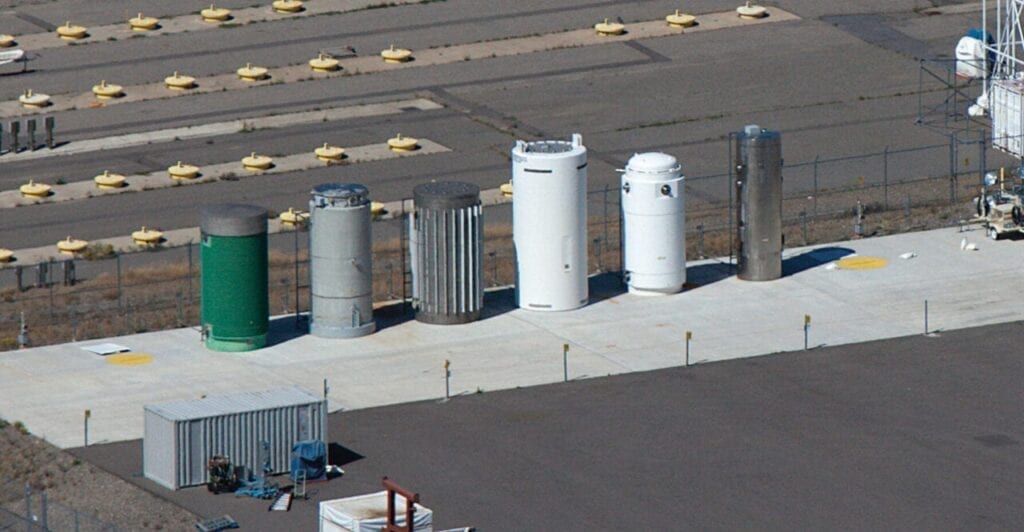DOE Rolls Out Nuclear Innovation ‘Blueprint’ Ahead of Biden Administration Takeover
The post DOE Rolls Out Nuclear Innovation Blueprint' Ahead of Biden Administration Takeover appeared first on POWER Magazine.

As it readies for a leadership shuffle, the Department of Energy's (DOE's) Office of Nuclear Energy (NE) has rolled out an ambitious blueprint" that urges continued technology innovation for existing nuclear, advanced nuclear, nuclear waste, and fuel cycles by the incoming Biden administration.
At its core, the NE's Strategic Vision" released on Jan. 8 posits that nuclear energy will be pivotal to U.S. energy, environmental, and economic needs-and it keeps with key policy priorities outlined in Biden campaign documents, which paint nuclear as an essential tool to combat climate change. But the vision also identifies five goals that NE is pursuing to address key challenges in the nuclear sector, and it describes a long list of ambitious first-of-their-kind projects that have garnered (or been earmarked for) federal funding.
NE's release of the Strategic Vision" on Friday came the same day as Dr. Rita Baranwal, the DOE's assistant secretary for its Office of NE, announced her departure. Baranwal, whose leadership at NE was lauded by many in the nuclear industry, will now join the Electric Power Research Institute (EPRI) as the nonprofit research organization's new vice president of Nuclear Energy and chief nuclear officer. In her last tweet as NE's head, Baranwal hailed the strategic vision as a tool that will help guide the office's work to help make nuclear more competitive, innovative, and accessible than ever before."
The NE Strategic Vision's release also comes just days after President Trump signed an executive order promoting the development and use of small modular reactors (SMRs) for national defense and space exploration. The executive order, made public on Jan. 12, urges a revitalization of the U.S. nuclear energy sector, a reinvigoration of America's space exploration program, and the development of diverse energy options for national defense needs. Last week, notably, the DOE separately rolled out an Energy for Space" strategy, highlighting key roles that the DOE innovation enterprise" can play in addressing power needs for space exploration.
Existing Fleet Prospects: Hydrogen, Hybrid Power, Accident Tolerant Fuel, DigitalizationNE's strategy essentially comprises five goals: to enable continued operation of existing U.S. nuclear reactors; to enable deployment of advanced nuclear reactors; to develop advanced nuclear fuel cycles; to maintain U.S. leadership in nuclear energy technology; and to enable a high-performing Office of NE organization.
Among NE's key objectives for the existing U.S. nuclear fleet are to develop technologies that could reduce operating costs and open up new markets.
On that front, NE is spearheading a much-watched $10 million project by Xcel Energy at a Minnesota nuclear plant (likely Prairie Island, a pressurized water reactor, as Xcel recently told POWER) to produce hydrogen from a steam stream using high-temperature steam electrolysis (HTSE), which is thought to be much more efficient that low-temperature electrolysis. NE is shooting to demonstrate the pilot, which will be partly developed at Idaho National Laboratory (INL), by 2022.
NE is also spearheading efforts to replace existing fuel in U.S. commercial reactors with accident tolerant fuel (ATF) by 2025. ATF fuels, it says could increase efficiency, improve performance, and reduce operating costs because they essentially leverage new materials that improve fission product retention and are structurally more resistant to radiations, corrosion, and high temperatures. Because they could potentially extend the time between refueling from 1.5 to 2 years, ATFs could reduce the amount of fuel needed by about 30%, resulting in less waste and used nuclear fuel.
So far, the DOE and an array of national labs are working with Framatome, General Electric, and Westinghouse to commercialize their new fuels by 2025. In December, Oak Ridge National Laboratory (ORNL) received the first nuclear fuel test rods developed by GE's Global Nuclear Fuel that spent two years at Southern Co.'s Edwin Hatch nuclear plant. NE's vision foresees a widespread implementation" of ATFs by 2030.
 Oak Ridge National Laboratory received a pair of accident tolerant fuel experiments developed by Global Nuclear Fuel in December. Courtesy: ORNL
Oak Ridge National Laboratory received a pair of accident tolerant fuel experiments developed by Global Nuclear Fuel in December. Courtesy: ORNLIn addition, NE is pursuing completing engineering and licensing of a digital reactor safety system in an operating plant by 2026. That effort stems from a larger push to modernize the existing nuclear fleet, which operates largely based on a state of technology that is over 40 years old," NE said. Other research includes work to address the technical and regulatory barriers of deploying more digital technology in nuclear plants.
However, the DOE is also assessing how the systems, structures, and components used in a nuclear reactor can sustain operations of more than 60 years. So far, the Nuclear Regulatory Commission (NRC) has approved subsequent license renewals (SLRs) for four of the U.S.'s 94 operational reactors, and it is currently reviewing four other applications.
 By the end of 2020, only 94 U.S. commercial nuclear power reactors were operational. The majority were above 40 years of age. Source: NRC
By the end of 2020, only 94 U.S. commercial nuclear power reactors were operational. The majority were above 40 years of age. Source: NRCIn her end-of-year review, Baranwal noted that one of NE's most significant research contributions in this realm was to help commercialize Alloy 617. The nickel, chromium, cobalt, and molybdenum alloy last year became the first metal in 30 years to be added to the American Society of Mechanical Engineers' Boiler and Pressure Vessel Code. It is also only the sixth material cleared for use in high-temperature reactors. Over a 12-year period, DOE invested $15 million to make the material available in support of the demonstration and deployment of advanced reactor designs," she said.
Deploying and Sustaining Advanced NuclearAs NE notes, more than 50 U.S. developers are pursuing advanced technologies, and some-like Oklo-last year marked major licensing milestones. NE, which launched the Gateway for Accelerated Innovation in Nuclear (GAIN) in 2015, in 2020 also established the INL-spearheaded National Reactor Innovation Center (NRIC) to help developers test and demonstrate their advanced reactor technologies at DOE-owned sites.
In May 2020, the NE also rolled out the Advanced Reactor Demonstration Program (ARDP), a much-watched initiative that will leverage Congressionally appropriated funding to enable actual construction of advanced nuclear reactors over the near-term and mid-term under three pathways. (Congress appropriated $250 million for the ARDP in Fiscal Year 2021; a total of $230 million was appropriated for Fiscal Year 2020 to initiate the program.)
Among the program's big winners are TerraPower and X-energy, which will each receive $80 million in initial federal funding to build their two distinct advanced nuclear reactors and begin operating them within seven years. As POWER has reported, both companies are looking at siting their advanced nuclear demonstrations in Washington state. In December, the DOE also chose five assorted advanced nuclear reactor concepts under the risk reduction pathway, and three recipients under the ARC-20 pathway.
In October, the DOE also granted $1.4 billion in funding to the Carbon Free Power Project at INL, which could begin operating NuScale light water reactor modules by 2029. At the same time, it is supporting a first-of-its-kind microreactor project, the Transformational Challenge Reactor (TCR), that will use a 3D-printed core, advanced materials, and integrated sensors and controls. That project at ORNL could be completed by 2024.
NE's vision, however, shoots for more. After demonstration of the TCR in 2024, it wants to enable demonstration of a commercial microreactor by 2025, and demonstration of a nuclear-renewable hybrid system by 2027. By 2028, it envisions the two ARDP designs could be demonstrated, followed by the NuScale module-the first commercial SMR-in 2029. By 2035, it wants to demonstrate at least two other advanced reactor designs through partnerships with industry, and it is aiming for broad commercial adoption for hybrid models for nuclear new builds.
Among NE's harder pushes are to build the Versatile Test Reactor (VTR) by 2026. In September, the planned experimental fast neutron reactor that the DOE says will be crucial to support domestic advanced nuclear reactor research and development cleared Critical Decision 1," paving the way for the engineering design phase to begin. In December, the DOE published a draft VTR Environmental Impact Statement, and the agency is scheduled to hold hearings later this month.
However, in its omnibus appropriations and coronavirus relief package, which Trump signed on Dec. 27, Congress directed the DOE to submit a plan- within a month of the law's enactment-for executing the VTR via a public-private partnership, along with an option for a payment-for-milestones" approach. According to the DOE, the updated cost range associated with Critical Decision 1 is now $2.6 to $5.8 billion.
 Artist's rendering of the U.S. Versatile Test Reactor planned for Idaho National Laboratory. The Versatile Test Reactor (VTR) will feature a sodium-cooled fast reactor that will accelerate testing of advanced nuclear technologies. Courtesy: INL Quest for New Nuclear Fuels
Artist's rendering of the U.S. Versatile Test Reactor planned for Idaho National Laboratory. The Versatile Test Reactor (VTR) will feature a sodium-cooled fast reactor that will accelerate testing of advanced nuclear technologies. Courtesy: INL Quest for New Nuclear Fuels Keeping with recommendations by the White House's Nuclear Fuel Working Group's (NFWG's) April 2020 findings, NE suggests it will this year begin the procurement process for establishing a uranium reserve. A reserve is necessary, NE says, because the U.S. supply chain is facing a number of challenges," owing to a significant decrease in domestic uranium production and idled U.S. uranium conversion. In its December omnibus bill, Congress provided $75 million to the National Nuclear Security Administration (NNSA) in the Weapons Activities account, but it directed NNSA to coordinate with NE to develop and implement the uranium reserve program.
By 2022, NE also wants to demonstrate domestic high-assay low-enriched uranium (HALEU) enrichment to address gaps in the domestic nuclear fuel supply chain. The U.S. nuclear industry currently estimates it may need up to 600 metric tons of HALEU by 2030, it notes, but as experts have told POWER, HALEU could also be in demand for advanced reactors under development in Canada and other countries.
Over the near-term, INL is working on providing HALEU from down-blending non-defense high-enriched uranium feedstocks and processing used reactor fuel from the Experimental Breeder Reactor II. The DOE also has a three-year $115 million contract that allows Centrus Energy (formerly USEC) to deploy a small cascade of 16 AC-100M centrifuges at the American Centrifuge Plant in Ohio to demonstrate production of HALEU by 2022. Once demonstrated, we expect industry will scale up operations to meet market demand. A commercial enrichment capability will fill an important gap in the supply chain for advanced reactor systems," it said.
By 2023, NE wants to make available up to five metric tons of HALEU from non-defense DOE material. By 2030, it also wants to evaluate fuel cycles for advanced reactors, many of which use fuel cycles that are significantly different from what are used for existing light water reactors.
Addressing the Nuclear Waste ImpasseCongress in December appropriated $27.5 million for nuclear waste disposal, of which $20 million was earmarked for interim storage, and $7.5 million is for Nuclear Waste Fund oversight activities. The funding is good news for NE, the DOE office that is responsible for the eventual disposal and associated transport of commercial used nuclear fuel, but which has long been implicated in a political push and pull that has resulted in an impasse on permanent disposal.
The Biden administration has suggested it will establish a new cross-agency, Advanced Research Projects Agency focused on climate (ARPA-C) to look at issues" ranging from cost to safety to waste disposal systems.
In its vision, NE said commercial used nuclear fuel is currently stored at 76 reactor or storage sites in 34 states, noting: For the foreseeable future, this fuel can safely remain at these facilities until a permanent disposal solution is identified." So far, NE has been working to provide the scientific basis for storage, transportation, and disposal solutions." One notable effort is by Sandia National Laboratories, which is outfitting three 22.5-ton, 16.5-feet-long stainless-steel storage canisters with heaters and instrumentation to simulate nuclear waste so researchers can study their durability in storing used fuel longer than their useful life of a few decades.
To support consolidated interim storage of used fuel, NE said it is developing plans to identify activities, milestones, and resources needed to develop a consolidated storage facility." To support the transportation capability, NE is also developing new, specially designed railcars to support large-scale transport of used nuclear fuel in the future." Work is also ongoing on related initiatives, such as high-burnup ATF fuels, it said.
 Dry storage casks at the Idaho Nuclear Technology and Engineering Center at INL. Courtesy: INLCollaborations to Sustain Nuclear's Relevance
Dry storage casks at the Idaho Nuclear Technology and Engineering Center at INL. Courtesy: INLCollaborations to Sustain Nuclear's Relevance NE sets out a number of initiatives to jump start nuclear research and sustain global collaborative efforts. Along with development of the VTR, plans include supporting the procurement of Training, Research, Isotopes, General Atomics (TRIGA) fuel elements for university reactors. NE said it is collaborating with the sole vendor of the fuel to provide the lifetime fuel these reactors need.
INL is also readying to establish the Sample Preparation Laboratory, which is expected to enable enhanced analysis of irradiated materials" for use in advanced nuclear energy systems. We expect to complete the SPL by 2026, satisfying the near-term gap for post-irradiation and examination capabilities," NE said.
Finally, by 2030, NE plans to work with NASA to demonstrate fission power systems (FSP) for surface power and propulsion. Efforts here too, are gaining steam, driven in part by DOE outreach and a handful of recent Trump administration directives. In a Dec. 22-issued draft request for proposals (RFP), for example, Battelle-the contracted entity that manages and operates INL-and NASA set out a list of design and operation requirements for a potential FSP-essentially a lunar microreactor-that the Trump administration wants demonstrated by 2027.
The draft RFP describes an FSP system consisting of a uranium-fueled reactor core (U-235 of less than 19.75% is preferred), a power conversion system, a thermal management system, and a power management and distribution system that can provide no less than 10 kWe at the user interface at end of life. Among Battelle's and NASA's other requirements are that FSP must be autonomously controlled, scalable to 40 kWe, and is preferably modular.
-Sonal Patel is a POWER senior associate editor (@sonalcpatel, @POWERmagazine).
The post DOE Rolls Out Nuclear Innovation Blueprint' Ahead of Biden Administration Takeover appeared first on POWER Magazine.